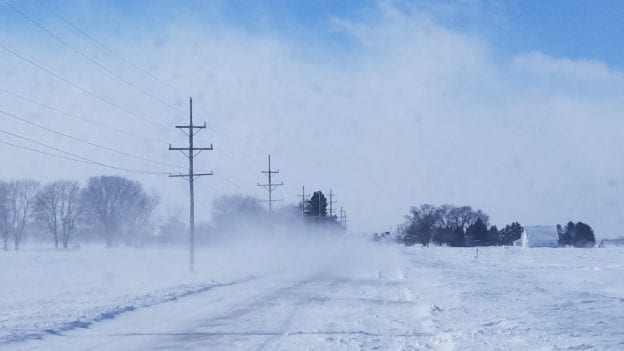Bulk Power System Deficiencies During Winter Storm Elliot Prompt Inquiries
Credit to Author: Sonal Patel| Date: Thu, 29 Dec 2022 21:57:06 +0000

Assessments are underway to pin down factors that prompted emergencies, tight grid conditions, and even load-shedding by major entities as Winter Storm Elliot bore down on the North American bulk power system (BPS) this past week.
The Federal Energy Regulatory Commission (FERC), the North American Electric Reliability Corp. (NERC), and regional entities affiliated with the nation’s designated Electric Reliability Organization (ERO) on Dec. 28 announced they would open a joint inquiry into BPS operations during the storm’s extreme winter weather conditions.
On Wednesday, the Tennessee Valley Authority (TVA), a federal corporation that also serves as the regional reliability coordinator, also said it was conducting a “thorough review of what occurred and why.”
The storm, a historic arctic outbreak that inundated two-thirds of the U.S. with frigid temperatures and gusty winds between Dec. 23 and Dec. 25, contributed to power outages affecting millions of electricity customers across the country. According to NERC, although most outages were due to weather impacts on electric distribution facilities operated by local utilities, “utilities in parts of the southeast were forced to engage in rolling blackouts and the bulk power system in other regions was significantly stressed.”
As POWER has reported, PJM Interconnection, the Midcontinent Independent System Operator (MISO), the Southwest Power Pool (SPP), and the Electric Reliability Council of Texas (ERCOT) faced tight conditions.
PJM, which issued its first conservation call since the 2014 polar vortex storm crisis, on Dec. 24 warned the risk of rotating customer outages “is very real.” MISO declared generation emergency events, and SPP declared an energy emergency alert. In ERCOT, an estimated 11 GW of thermal generating units, 4 GW of wind generators, and 1.7 GW were in outage as of Dec. 23, prompting the grid operator to ask the Department of Energy (DOE) for a Section 202(c) emergency order to allow maximum operation of specified generators, unfettering them from state emissions requirements, in the event outages units did not return to service or if other units went out.
Events proved direr in southeastern regions overseen by two of the nation’s biggest utilities.
For the first time in its 90-year history, TVA directed local power companies to shed targeted load on Dec. 23 and Dec. 24. TVA told POWER the issue was rooted in an unprecedented demand surge.
“For the 24 hours on Friday, Dec. 23, TVA set an all-time TVA record for energy delivery: 740 GWh. The previous record was 706 GWh in 2018. We also set an all-time winter peak power demand record: 33,425 MW. It is also the third-largest peak demand in TVA’s history,” a spokesperson said. “Normally, during this time of year, our system manages demand of around 24,000 MWs.” In addition to the intensified demand, “a limited number of TVA’s generating facilities did not operate as expected during this event resulting in a loss of generation,” she said.
TVA on Wednesday said it required a 5% system-wide power consumption reduction for two hours and 15 minutes on Dec. 23. On Dec. 24, it required a system-wide power consumption reduction in 5-10% curtailments for 5 hours and 40 minutes. “Most of the local power companies were able to target power reductions that impacted customers for relatively short durations,” it said. “We greatly appreciate their partnership and support throughout this event.”
Duke Energy also shed load in North and South Carolina on Dec. 24 to protect the energy grid against “longer, more widespread” outages. The company said it “successfully met the expected peak energy demand in the Carolinas on Sunday, Dec. 25, and Monday, Dec. 26, thanks in large part to customer efforts to conserve power after the weekend’s arctic blast placed an unusual strain on the energy grid.”
“The effects of Winter Storm Elliott demonstrate yet again that our bulk power system is critical to public safety and health,” FERC Chairman Rich Glick said on Wednesday. “The joint inquiry with NERC we are announcing today will allow us to dig deeper into exactly what happened so we can further protect the reliability of the grid.”
FERC said that as part of its joint inquiry with NERC, it will work with other federal agencies, states, and utilities “to identify problems with the performance of the bulk power system and, where appropriate, recommended solutions for addressing those issues.”
NERC President and CEO Jim Robb suggested lessons learned from the inquiry could be useful for future winter preparations. “In addition to the load shedding in Tennessee and the Carolinas, multiple energy emergencies were declared and new demand records were set across the continent. And this was in the early weeks of a projected ‘mild’ winter,” he said. “This storm underscores the increasing frequency of significant extreme weather events (the fifth major winter event in the last 11 years) and underscores the need for the electric sector to change its planning scenarios and preparations for extreme events.”
—Sonal Patel is a POWER senior associate editor (@sonalcpatel, @POWERmagazine).
The post Bulk Power System Deficiencies During Winter Storm Elliot Prompt Inquiries appeared first on POWER Magazine.